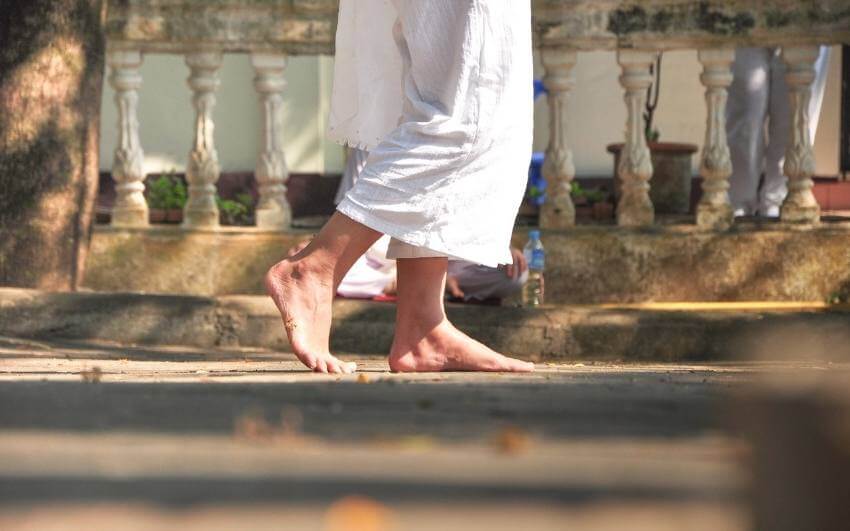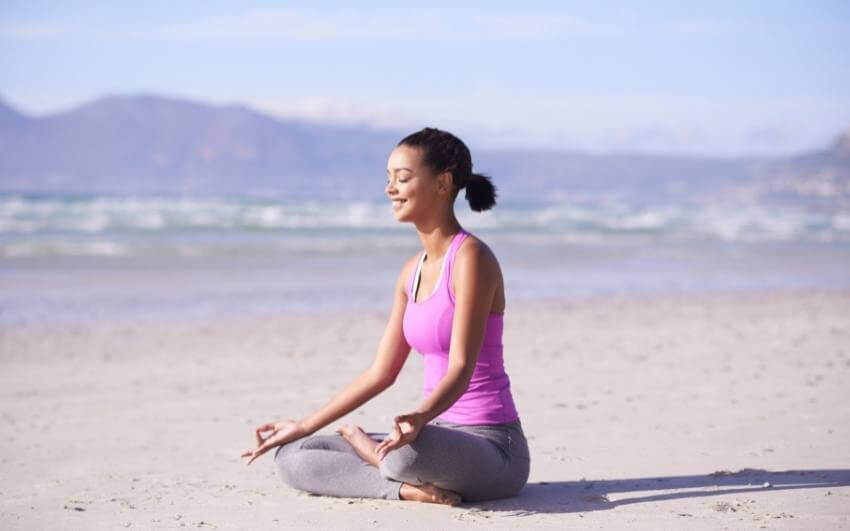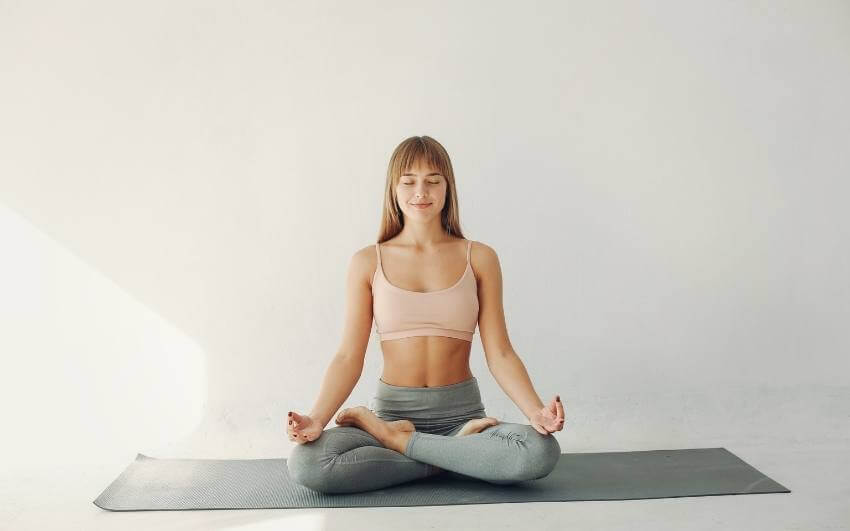On this page

7 Different Types of Meditation: Which One is Right For You?
Doing meditation isn’t easy. Roughly 80% of new meditators fail to get into it because they can’t find the right type of meditation for them. And on top of everything else, there are so many different types of meditation styles to choose from. These endless choices make many people procrastinate instead of taking action on their meditation practices.
However, a meditation practice can be the difference between your life failing or flourishing. Why? Because if you find the right meditation, you can benefit from:
- Reduced stress
- Improved mental clarity and focus
- Increased self-awareness
- It also promotes relaxation and improves overall physical health
- Alongside health benefits, it can be used for manifestation
Whether you’re a mother, or an overwhelmed marketing professional with a tight schedule, we know you don’t always have the time and resources to research everything there is to know about the different meditation techniques.
So in this guide, we’ve compiled seven different types of meditations to help you choose the right one for you.
7 Different Types of Meditation
Meditation type 1: Mindfulness Meditation

Mindfulness meditation is a form of meditation commonly practiced in the western world. It is a simple and effective way to bring mindfulness into your daily life.
Mindfulness meditation is easy to learn and can be done anywhere. All you need is a comfortable place to sit or lie down and a few minutes.
- It involves closing your eyes and focusing on your breath.
Mindfulness meditation is a simple yet powerful practice. It can help you reduce stress, improve your well-being, and find greater peace in your life. There’s no right or wrong way to do it. Just be patient and gentle with yourself, and keep returning to the present moment.
How is it done?
- Find a comfortable place to sit or lie down. You can do this meditation anywhere.
- Close your eyes and take a few deep breaths.
- Focus your attention on your breath. Simply notice the sensation of breathing in and out.
- Continue for 5-10 minutes, or longer if you like.
It’s suitable for people who:
- Mindfulness Meditation is recommended for beginners. It is also suitable for those who need an easy meditation method that they can use anywhere and anytime.
Meditation type 2: Transcendental Meditation

Transcendental meditation is an effortless meditation technique. It allows the mind to settle inward and experience a natural state of relaxation. The goal is to get insight into the true nature of reality by focusing on all aspects of your existence.
The Transcendental Meditation technique is easy to learn and provides many benefits. It is not for one religion, philosophy, or lifestyle. Rather, it is a simple procedure that anyone can learn and enjoy regardless of age, culture, or beliefs.
- It involves closing your eyes and repeating and focusing on a Mantra.
Using this method can gain increased intelligence —creative, intuitive, and spiritual. The person experiences an increased ability to think clearly and creatively. It also leads to improved problem-solving skills and decision-making.
How is it done?
- Sit down comfortably on the floor.
- Close your eyes and take a few deep breaths.
- Slowly keep repeating your mantra and direct your focus towards it.
- Practice twice a day for 20 minutes.
It’s suitable for people who:
- This method involves repeating a mantra out loud. So, It is suitable for those who have an empty and quiet space available to them.
- It is also suitable for those people who are looking for a way to meditate that is simple yet effective.
Meditation type 3: Focused Meditation

Focused meditation is a type of meditation in which you focus on an object, thought, or activity.
- It involves closing your eyes and focusing on an object, thought, or activity.
One of the most obvious benefits is that it can help reduce stress and anxiety levels. When you focus on one thing, you are less likely to be distracted by other things around you. It can help clear your mind and allow you to feel more relaxed. It can also help to improve your concentration and focus and help you to stay focused on tasks and goals.
How is it done?
- Find a comfortable place to sit or lie down and close your eyes.
- Choose an object or a thought to focus on (Anything you are comfortable with).
- Direct your focus on the object, and ease your shoulders. Get rid of any negative thoughts.
- Practice for as long as you like.
It’s suitable for people who:
- It is suitable for those who want to improve their concentration, clarity of thought, and emotional stability.
- It is a simple meditation method that does not require years of practice. It can be used by anyone looking for an easy method to start.
Meditation type 4: Movement Meditation

Movement meditation is a practice that uses physical movement to focus the mind. It can be done through walking, dancing, yoga, or tai chi. The aim is to bring your attention to the body’s sensations in motion.
- It involves closing your eyes and focusing on the movement of your body.
Movement meditation can be a helpful way to reduce stress and improve sleep. It may also help to boost cognitive function and protect against pessimistic thoughts.
With a little practice, you’ll soon find that movement meditation is an enjoyable way to find inner peace.
There are many different ways to practice Movement meditation. Some people prefer to do it solo, while others find it helpful to meditate in a group setting.
How is it done?
- Find a comfortable place to stand or sit.
- Take a few deep breaths and focus on your breath.
- Slowly begin to move your body, focusing on the sensation of your breath and movement.
- Continue for a few minutes, then gently return to stillness.
It’s suitable for people who:
- It is suitable for those who want to keep their body active and in motion while meditating.
- It is for those who want to experience a new form of meditation. As sitting in one spot can be boring and difficult for some.
Meditation type 5: Visualization Meditation

Visualization meditation is a technique that can be used to promote relaxation. It can be practiced anywhere, at any time, making it a convenient way to meditate.
- It involves closing your eyes and focusing on positive scenarios to achieve a state of calmness.
This type of meditation can be helpful for those who suffer from anxiety or stress. It can also be used for manifestation.
Some benefits include improved mental clarity, emotional stability, and creativity. It can help to improve physical health by reducing stress and promoting relaxation.
How is it done?
- Find a comfortable place to sit.
- Take a few deep breaths and close your eyes.
- Visualize yourself in positive situations (like sitting in a garden) to calm your mind. Forget all negative thoughts.
- Continue for as long as you like.
It’s suitable for people who:
- Visualization Meditation can help improve your focus and concentration. It can also help you learn how to control your thoughts.
- The practice can also be helpful for people who want to explore their creative side.
- Those who want to use meditation to manifest their desires.
Meditation type 6: Loving-Kindness Meditation

This meditation is used to cultivate feelings of warmth and caring towards yourself and others. Loving-kindness meditation is a practice that can help you develop more compassion for yourself and others.
- It involves closing your eyes and sending kindness towards yourself or someone else.
The goal of this meditation is to cultivate compassion and care for ourselves. It can be difficult to truly care for ourselves if we don’t feel worthy of love and kindness. This meditation can help us change that by opening our hearts to ourselves. Through the practice of sending compassion to ourselves, we can start to heal old wounds and cultivate a deeper sense of self-love and care.
Anyone can practice this meditation regardless of their religious or spiritual beliefs.
How is it done?
- Find a comfortable place to sit or lie down.
- Begin focusing on your breath. Start breathing in and out.
- Repeat the following sentences to ease your mind: “May I be happy and healthy,” and “May I be safe from hardships.”
- As you repeat these phrases, focus on the intention behind them.
- Visualize yourself surrounded by loving-kindness and compassion. Imagine the warmth of this love filling your entire body. Allow yourself to feel the compassion and care you send yourself.
It’s suitable for people who:
- It is suitable for those who want to increase their capacity for forgiveness, connection to others, and self-acceptance.
Meditation type 7: Body Scan Meditation

Body scan meditation is a form of meditation in which you focus on each part of your body, top to bottom. The purpose of the body scan is to increase awareness of your body. It is used to release any tension or stress that you may be holding in your muscles.
- It involves closing your eyes and paying attention to body parts and bodily sensations. (In a sequence from head to feet)
Some benefits of body scan meditation include: reducing stress and anxiety, improving sleep, increasing energy levels, and boosting concentration and focus. Once you’ve learned how to do a body scan, you can practice it anytime, anywhere – whether at home, at work, or even on the go.
How is it done?
- Find a comfortable place to sit or lie down.
- Close your eyes and focus your attention on your breath.
- Slowly scan your body from head to toe. Notice any sensations that you feel in each part of your body.
- Start slow and gradually increase the time.
It’s suitable for people who:
- It is suitable for those looking for a good way to relieve physical tension or chronic pain.
Many Different Meditation Techniques
Along with many different types of meditation, many different techniques are available. You can choose whatever method you are most comfortable with.
Some people find it helpful to focus on a certain word or phrase during meditation. At the same time, others prefer to simply focus on their breath.
There are many different techniques people use to meditate:
- Focusing their attention on a word or phrase
- Focusing their attention on their breath
- Focusing their attention on an object or a thought
- Focusing their attention on things like music
- Focusing their attention on a body part
- Focusing their attention on the movement of their body
Experiment until you find what works best for you. Meditation can be a great way to reduce stress, improve your mood, and increase your well-being.
Which Meditation is Right For You?
There are many different types of meditation, and it can be tough to know which is right for you. If you’re new to meditation, it might be a good idea to try a few different types to see which one works best for you. Once you’ve found a type of meditation that you enjoy and that seems to work well for you, stick with it.
Here are a few suggestions to help you choose the right method:
If you are a beginner:
- Mindfulness Meditation
- Focused Meditation
- Transcendental Meditation:
You can try these meditation types depending on your situation:
- Visualization Meditation: If you want to relieve stress and anxiety or if you want to manifest your desires.
- Loving-Kindness Meditation: If you want to practice compassion and be more forgiving.
- Body Scan Meditation: If you want to relieve chronic pain or release physical tension.
- Movement Meditation: If you want to keep your body active while you meditate.
Start by setting aside some time each day for meditation. You can meditate for as little as 5 minutes or up to an hour. Find a quiet place where you can sit comfortably with your spine straight. Begin meditating using different methods. Don’t worry if you can’t quiet your mind at first. With time you’ll achieve a deeper state of relaxation and focus.
After your meditation session, you’ll likely feel more calm and centered. You may even find that your mind is clearer and better able to focus on the task. Find one that resonates with you and give it a try!
What Changes When One Begins Meditating?
When you start meditating, you will notice changes in your thinking and emotions. These changes can range from low to high and often occur over time.
Some of the most commonly reported changes include:
- Improved concentration and focus
- Increased self-awareness
- Greater clarity of thought
- A more positive outlook on life
- Enhanced well-being and calmness
- Improved sleep quality
Everyone experiences these changes differently. But, regular meditation can be a powerful tool for promoting change in all areas of your life.
Conclusion
Meditation is beneficial for both mental and physical health. There are many different types of meditation available. It is safe to say that there is A LOT of diversity regarding meditation. On top of that, it can be used for manifesting your dreams.
The best way to choose the right method for yourself is to test some methods available. Only then will you be able to find the one you are comfortable with.
Select one and stick to it.
Practice every day.
Accompanied by happiness, you will become more calm, compassionate, and optimistic. So start meditating today and notice the changes in your life!
FAQs: Frequently Asked Questions
How many types of meditation are there?
There are many different types of meditation. This is a guide to 7 different types of meditation and meditation practices. The main types of meditation include deep breathing.
The ten most commonly used methods are listed below:
- Mindfulness Meditation
- Spiritual Meditation
- Focused Meditation
- Movement Meditation
- Body Scan Meditation
- Transcendental Meditation
- Progressive Relaxation
- Loving-kindness Meditation
- Visualization Meditation
- Creative Visualization
What is the strongest type of meditation?
There is no definitive answer to this question as it depends on the individual and what works best for them.
But, some of the most popular types of meditation include:
- Mindfulness meditation
- Transcendental Meditation
- Visualization Meditation
While there are many different types of meditation, each has its benefits. The strongest type of meditation is the one you find most effective.
Try experimenting with different types of meditation until you find the most comfortable method. With regular practice, you can develop a focused mind that can help you achieve happiness.
What time of day should I meditate?
There is no definitive answer to this question. That is because different people have different schedules and preferences.
But, many people meditate first thing in the morning. They believe it helps set the tone for the rest of the day and allows them to stay focused. If you are new to meditation, starting with shorter sessions may be helpful and gradually working up to longer ones. Experiment with different times of day and find what works best for you.
How many minutes should we meditate?
There is no one answer to this question – it depends on each individual’s needs and preferences.
But, it is recommended that people meditate for at least 20 minutes daily. It gives the mind enough time to settle into a state of relaxation. It also allows the individuals to experience the full benefits of the practice. Of course, if you are just starting, you may not be able to sit for 20 minutes right away. Start with whatever time you feel comfortable with and slowly increase it.
What are the two main types of meditation?
There are two main types of meditation:
- Focused attention
- Open monitoring
With focused attention, you focus your attention on an object, thought, or activity. It can help you to improve your concentration and focus. Open monitoring involves paying attention to all thoughts, feelings, and sensations. This type of meditation can help you become more aware of your surroundings.

Petri Maatta is a mindset coach and neuroscience-focused author with 15 years of experience in personal transformation and success psychology. After seven years of business failures, he discovered the power of manifestation through a Fortune 500 mentor. Now, he shares neuroscience-backed strategies through DreamMaker membership, helping others transform their businesses and lives on their own terms.
Read My Story here.
Share This Story, Choose Your Platform!
You want to manifest a new car, but you’re wondering: Does this really work? Here’s
Many smart individuals are often linked with having a high IQ. However, according to emotional
According to online dating statistics over 90% of people believe in love at first sight,




